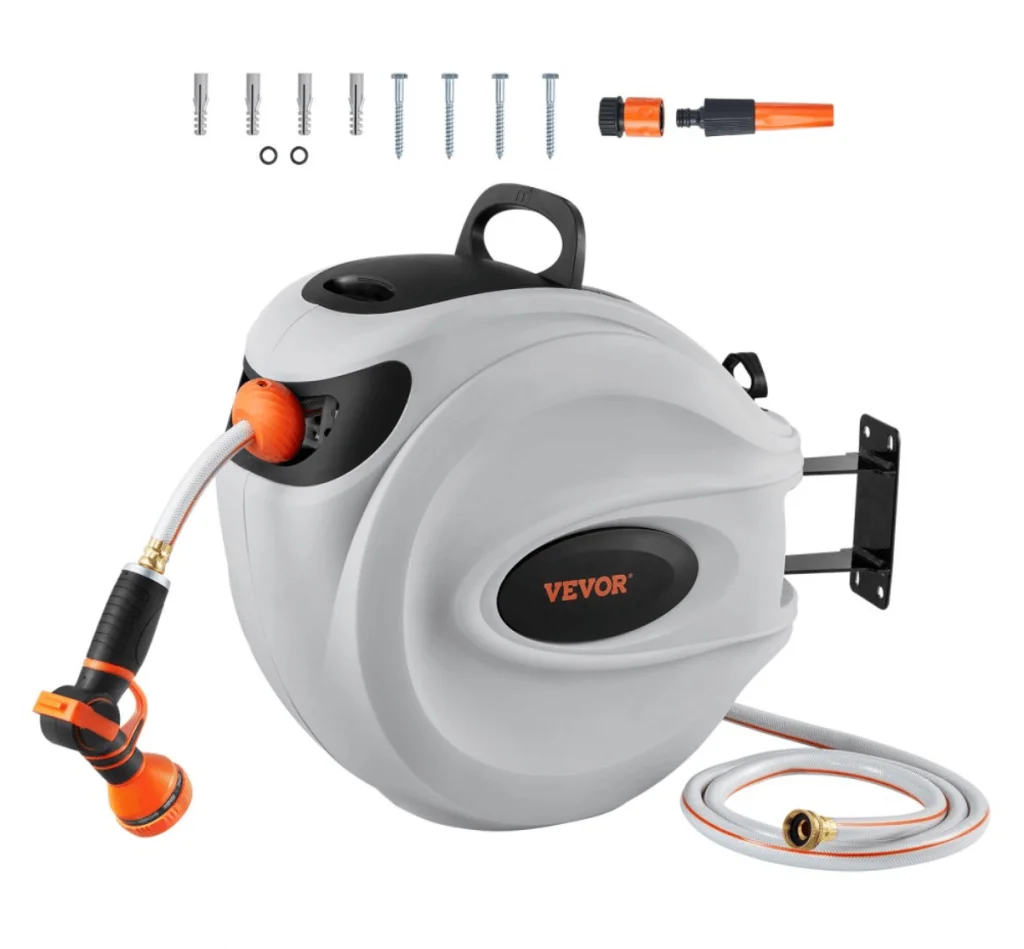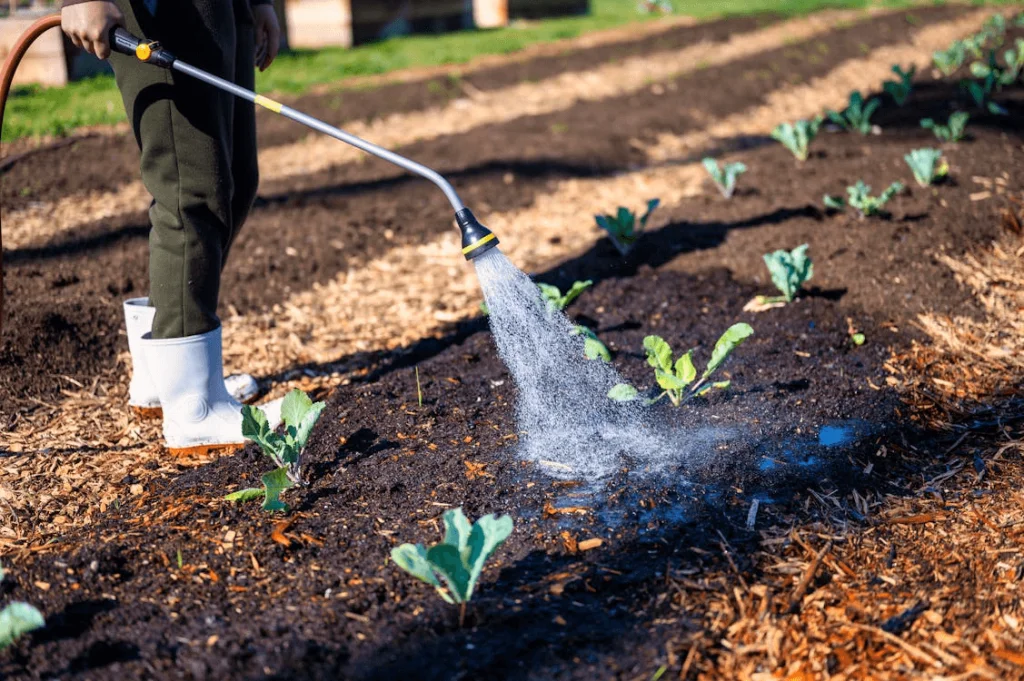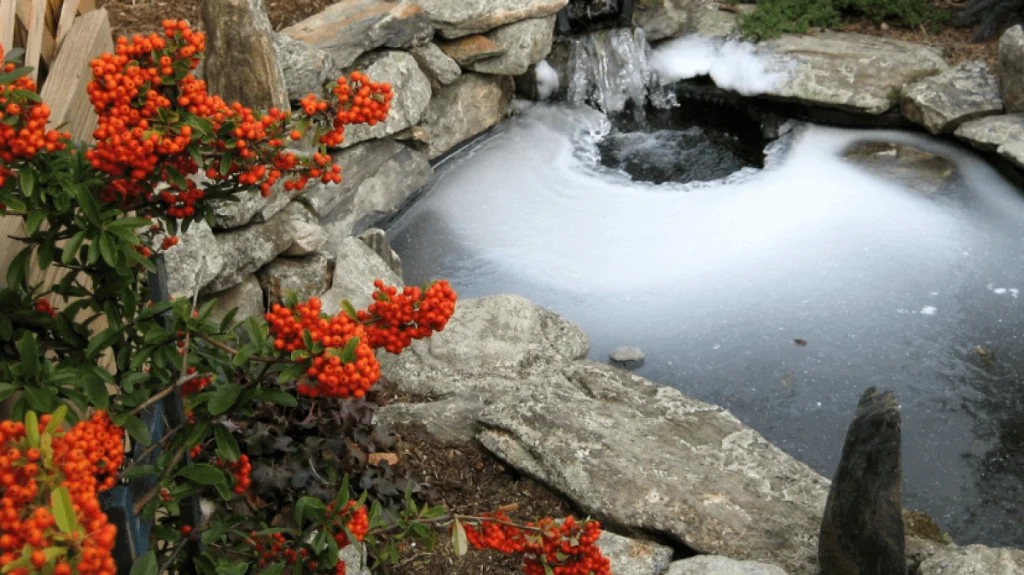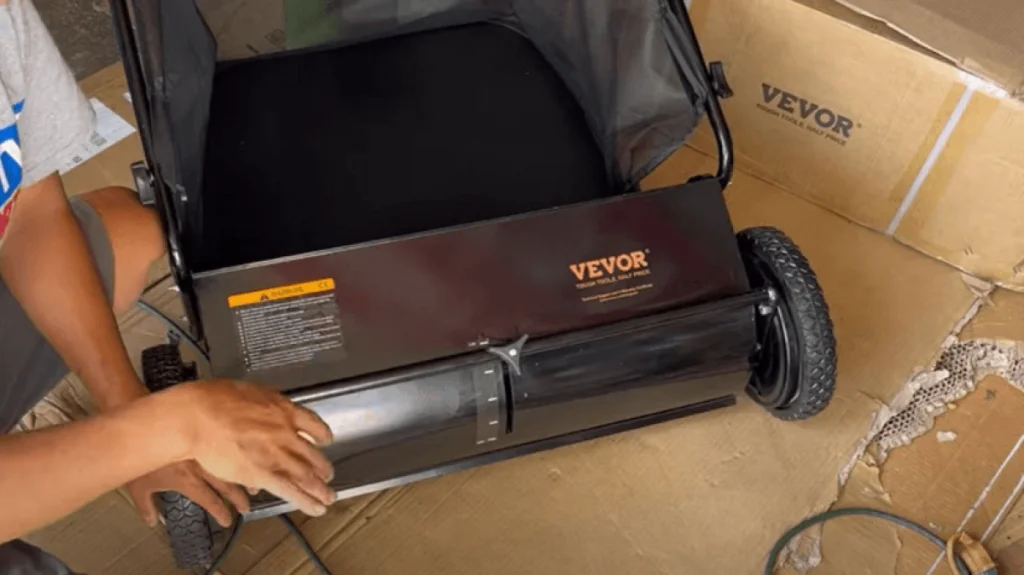Do frosted water hoses during cold winter months make you tired? You’re not alone! A lot of people meet this issue and it’s a real pain. Furthermore, the hose may burst and cause water leakage. Not only reducing the watering and washing ability but also exposing it to damage as well as repair expenses.
However, don’t fret! In this article, we will look at why garden hoses freeze, what are the best ways to keep water hose from freezing, how to thaw a frozen hose safely. Also, why you might want to invest in the VEVOR Retractable Garden Hose Reel. Let’s dive in!
Table of contents
Understanding Why Garden Hoses Freeze
Have you ever thought about why your garden hose solidifies when the winter season comes around? Let’s break it down.
Guess what? When the temperature goes below freezing, so does the water in the garden hose. This happens because water freezes when it gets really cold. It is similar to what happens when you put a glass of water in the freezer. After some time this water turns into ice. The same thing happens inside your hose!
Now, of course, the most essential question is why does this happen? Which is not difficult to guess. It is about science! When water becomes cold, its molecules slow down and start to stick to each other, thus forming ice crystals. And the results are likely that these tiny ice crystals fill in your hose and obstruct the flow of water so that water will freeze solid.
Thus, it is better to be aware of weather conditions and really make sure that it doesn’t get really cold. If it looks like it’s getting fairly cold, you might want to take off your hose from the faucet and drain any remaining water. This way, you will not need to suffer the inconvenience of a frozen hose in the future.
By learning about the science of which garden hoses freeze, one will know how to help the hose and keep it in good condition even during the coldest months of the winter season.
The Best Methods to Keep Your Water Hose from Freezing
Let us dive into the best methods on how to keep a garden hose from freezing during the cold winter months.

Use of Heated Hoses
First, we have heated hoses. These are hoses with built-in heating elements that are designed specially for this purpose. These elements are responsible for keeping the water in the hose warm. This means that the water remains liquid and cannot freeze even in very low temperatures.
The best part? It doesn’t require you to do anything extra – just attach the heated silo to your water outlet and you’re all set! Heat hoses are the best idea for places that have hard winters and that will give you the ability to access water whenever you need it.
Applying Heat Cables
And now, let’s look at heat cables. Other measures such as the use of heat cables known also as heat tapes or heat trace cables are another good option for avoiding hose freezing. These cables are connected to the water hose and provide a heat barrier. This will keep the water inside the hose warm enough such that it won’t freeze.
Installing heat cables is easy – just layer them around your hose, plug them in, and let them do the job. Heat cables are a perfect solution for those who don’t want to break the bank while protecting their hoses.
And this way you learn how to prevent the hose from freezing.
Proper Hose Insulation Techniques
Lastly, we introduce the best techniques for proper hose insulation. Attaching an insulator to a water hose for winter is an easy, efficient method to keep the water unaffected by freezing. Insulating materials such as pipe insulation or hose insulation sleeves prevent the loss of heat. It keeps the water inside your hose from freezing.
Insulation is done on your hose by wrapping it with the insulation material and then securing it properly. This additional barrier will guarantee that your hose remains fully functional in the coldest seasons as well.
And so there you are – the top solutions on how to keep water hose from freezing. Whether you prefer heated hoses, heat cables, or proper insulation techniques, you can be glad to know that your hose will stay the way it is even in winter.
How to Thaw a Frozen Garden Hose Safely

So you have found yourself with a frozen garden hose and need to get it out safely. Do not worry! How to keep a water hose from freezing can be done with a few simple methods.
First, your frozen hose should be moved to a warmer place. Taking it indoors is obviously the best option, but a heated garage or a shed will also do. By changing the spot of the hose to a warmer one, you will melt the ice without causing any damage to it.
If you are in a hurry and want to thaw the hose quickly, you can use warm water to accelerate the process. Just pour warm water over the frozen parts of the hose until the ice starts to melt. However, avoid using very hot water, as this may harm the hose.
Although it is easy to use hair dryers or heat guns to defrost a frozen hose, it’s better to avoid them. These tools are capable of generating excessive heat too fast that might damage or even break the hose. In such cases, it is advisable to apply less drastic methods like warm water or moving a hose to a warmer location.
Lastly, be patient! Waiting for a frozen hose to thaw will probably take some time. Especially if it has been exposed to extremely cold temperatures. Give it time to warm up naturally without any force or high heat which can later cause damage.
With just a little bit of patience and the right method, you will see your hose back in working order in no time. And this is how to unfreeze the garden hose.
Step-by-Step Guide to Using VEVOR Retractable Garden Hose Reel in Winter

All right, let’s start with setting up your VEVOR hose reel. The next step will be to place the reel in a suitable spot. It is critical to find a location that is not exposed to the weather. This can be a place like an attached garage or shed, to protect from snow and ice. After you’ve found the right place, use the mounting hardware to attach the reel to the wall or the ceiling.
Secondly, connect your hose to the reel. Easily get it started by attaching one end of your garden hose to the nozzle on the reel, and the other end to your water source. Check to ensure there is no danger of leaks by making sure the connections are tight.
After your VEVOR hose reel is mounted, let’s tackle the maintenance next. Being able to keep it from freezing is one of the best attributes of VEVOR reel in cold weather. The reel has weather-resistant materials and a tough case. This ensures the hose is protected against any damaging elements.
In addition, you will be able to wind up the hose back into the reel when it is not in use to prevent the water inside from freezing.
To care for your VEVOR hose reel in winter, just make sure that you look it over occasionally, paying attention to any possible signs of damage or wear. Check the connections often to confirm they’re tight and secure.
Look at the reel for any signs of ice formation or damage caused by cold temperatures. If you realize any problems, such as leaks or cracks, make sure to fix them immediately to stop further deterioration.
With this, you’ll be able to maintain your VEVOR Garden Retractable Hose Reel in good condition all winter long, freezing your hose from any harm. Moreover, the reel will be ready for use whenever you need it.
Preventative Measures to Avoid Freezing

We will discuss some ways for water hose freeze protection. In reality, it is easier said than done. If you don’t want to struggle with thawing out solid ice, you just have to stop indulging in frozen treats!
Routine Maintenance Tips
Firstly, remember to give your garden hose a good care by regular maintenance. Make sure you do not leak your hose or any damage. It is advisable to fix it as soon as you discover any leak or damage to your hose.
In addition, be sure to drain the hose completely after each use, including the winter. This keeps the residual water inside the hose from freezing and damaging it.
Storage Solutions to Consider
Now, let’s talk storage. Indoor storage of your garden hose or at a controlled temperature is the way to go if you don’t want to have problems with your pipe freezing. I can guarantee you, your house will be grateful for that!
The brutal cold can harm the hose. Therefore, by keeping it comfortably warm indoors during the winter, you reduce this risk. Besides, this gives you a longer service life for your hose thereby saving on the replacement. It’s a win-win!
Conclusion: Why Choose VEVOR Retractable Garden Hose Reel?
However, the issue of frozen water hoses during the winter can be very annoying. While it may be challenging, with proper tools, like the VEVOR Retractable Garden Hose Reel, you now know how to keep the hose from freezing in winter.
Hence, allowing your water to keep on flowing through the winter season. So why wait? Never experience the problem of the frozen hoses again with the VEVOR hose reel!





